Moroccan Hammams Explained: Your Guide to Tradition, Culture, and Wellness
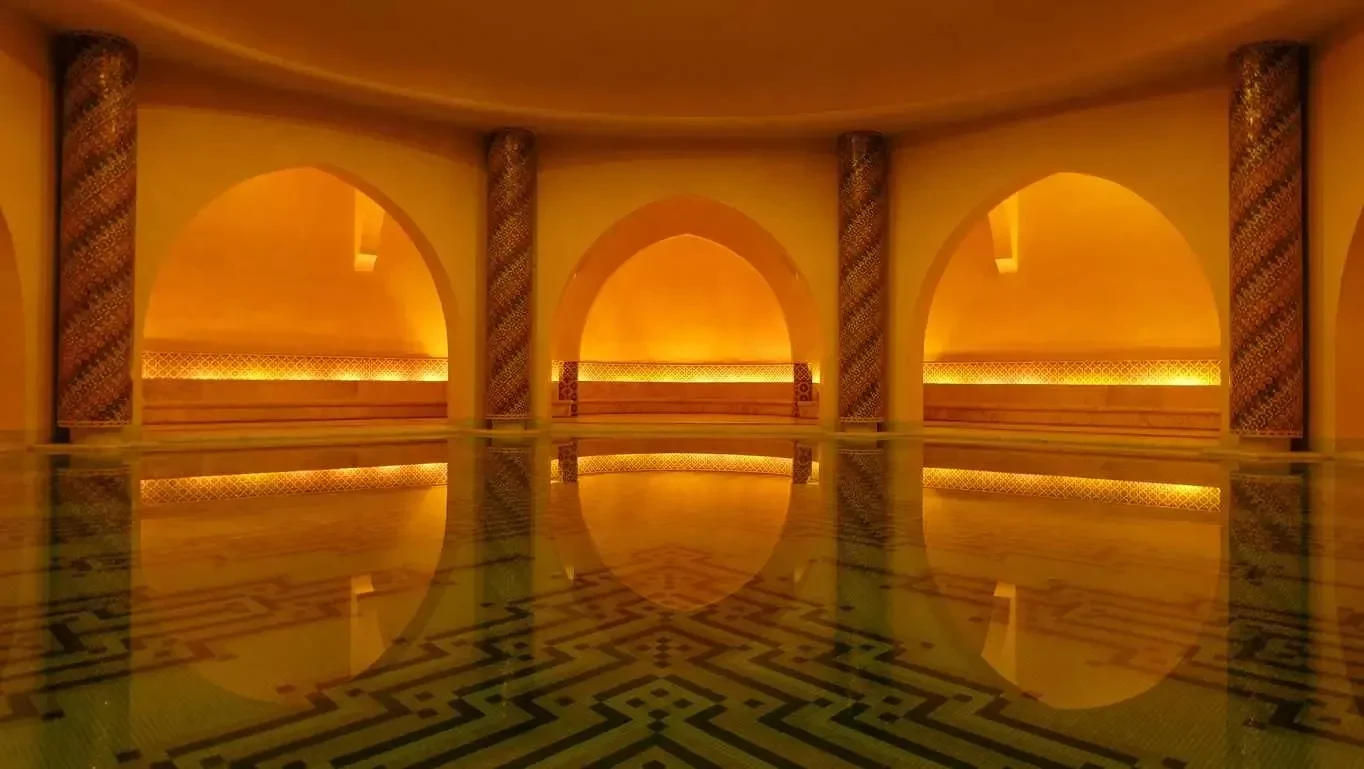
Hammams stand as living monuments to Morocco's enduring cultural heritage, their steam-filled chambers echoing with centuries of ritual and community connection. These sacred bathing spaces, known throughout the Arab world as the "House of Vapor, House of Warmth, House of Steam", extend far beyond simple cleansing, they represent a profound intersection of spiritual purification, social bonding, and ancient wellness practices that continue to thrive in modern Morocco.
Archaeological evidence traces these remarkable institutions to the 8th century, with the oldest Islamic hammam ruins discovered in the ancient Roman settlement of Volubilis. Born from practical necessity during an era when private bathing facilities remained unavailable to most people, these communal bathhouses quickly evolved into something far more significant than their utilitarian origins suggested. The traditional Moroccan hammam emerged as both sanctuary and social hub, serving the dual purposes of ritual ablution required for Islamic prayer and meeting the broader community's hygiene needs.
Today, countless Moroccans maintain their ancestors' devotion to this weekly ritual, finding within these tiled sanctuaries a unique form of physical and spiritual renewal that modern conveniences cannot replace. Across Northern Africa, hammams continue to occupy a central position in social and cultural life, where the time-honored bathing ceremony unfolds through carefully orchestrated steps from the application of traditional black soap (beldi) to the invigorating exfoliation performed with the distinctive Kessa cloth.
This detailed exploration will guide you through every aspect of Morocco's most cherished wellness tradition. You'll discover the fascinating historical roots and profound cultural meaning of hammams, follow the complete step-by-step ritual that has remained virtually unchanged for generations, and understand why these ancient bathhouses continue to serve as pillars of Moroccan social life. Whether you're preparing for your own hammam experience during travels to Morocco or seeking to bring this therapeutic tradition into your home, this guide will deepen your appreciation for the rich heritage and enduring benefits of this remarkable practice.
What is a Moroccan Hammam?
The Moroccan hammam stands as an ancient bathing institution where physical purification meets profound social ritual. These architectural marvels function as communal sanctuaries, distinctly different from conventional bathhouses through their integration of spiritual cleansing practices with community gathering spaces.
Origins of the Moroccan bath tradition
Morocco's hammam tradition draws its earliest influences from Roman public baths established over 2,000 years ago throughout North Africa. However, the arrival of Arab conquerors during the 7th century fundamentally altered these bathing practices, infusing them with Islamic principles and creating the distinctive hammam culture we recognize today.
The strategic placement of hammams adjacent to mosques reveals the profound spiritual dimension of this tradition. This architectural decision reflects the Islamic emphasis on ritual purity before prayer, establishing hammams as essential religious infrastructure rather than mere bathing facilities. The enduring connection between physical cleansing and spiritual preparation continues to define the hammam experience across Morocco.
How hammams differ from other bathhouses
Moroccan hammams possess architectural and ceremonial elements that distinguish them from their global counterparts. While frequently confused with Turkish baths, Moroccan facilities feature a series of three to four interconnected chambers, each maintained at progressively higher temperatures beneath characteristic vaulted, dome ceilings. Notably absent are the pools common to Turkish establishments, replaced instead by spacious, intricately tiled rooms where the entire ritual unfolds on heated marble surfaces.
The ceremonial use of savon beldi represents perhaps the most distinctive aspect of Moroccan hammam culture. This traditional black soap, crafted from olive paste, olive oil, argan oil, and aromatic essential oils, offers both gentle exfoliation and deep moisturization qualities that set the Moroccan experience apart from bathing traditions found elsewhere in the world.
Why hammams are still popular in Morocco
Economic accessibility ensures hammams remain within reach of all social classes, with neighborhood establishments typically charging between 10-20 dirhams (approximately $1-2) per visit. This affordability democratizes the wellness experience, making regular hammam visits feasible regardless of economic status.
Beyond mere convenience, hammams fulfill irreplaceable social functions within Moroccan communities. These venues provide essential gathering spaces, particularly for women whose public social opportunities may otherwise remain limited. The weekly hammam visit, whether undertaken individually or with companions, creates a rhythmic social structure that binds urban and rural communities alike.
Ceremonial occasions elevate hammams beyond routine hygiene to celebratory significance. Wedding preparations traditionally center around elaborate hammam rituals, where brides and their female relatives gather for purification ceremonies that mark important life transitions. This ceremonial continuity ensures that even as Morocco modernizes and tourist-oriented hammams emerge, these ancient institutions maintain their vital role within contemporary Moroccan society.
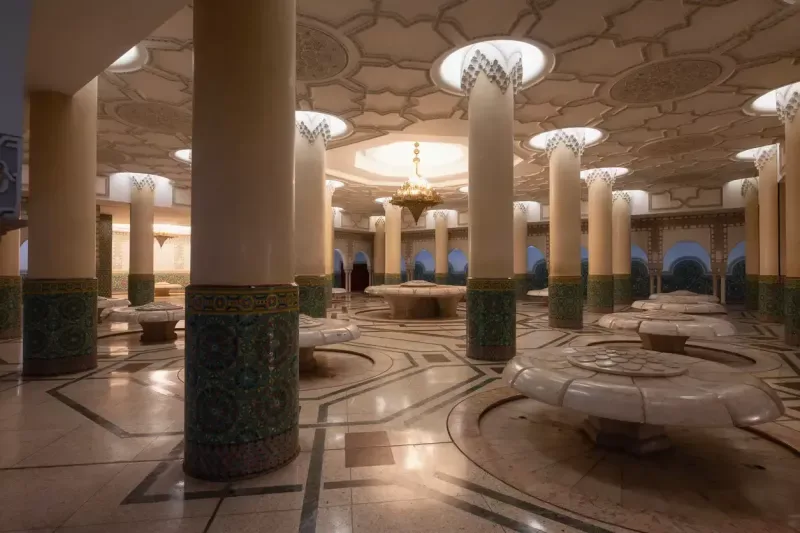
You'll experience a traditional steam bath ritual: first, you relax in a hot, humid room to open pores. Then an attendant scrubs your entire body with a rough kessa glove, removing dead skin. You'll receive a black soap (savon noir) treatment, followed by rinsing and sometimes a clay mask. The experience ends with a moisturizing argan oil application.
In public hammams, men wear underwear or swim shorts; women go topless or wear underwear only. In private/tourist hammams, you'll typically wear disposable underwear provided. Nudity customs vary; follow your attendant's guidance.
Inside the Traditional Moroccan Hammam Ritual
The hammam experience unfolds as a carefully choreographed dance between ancient wisdom and personal renewal, where each stage builds upon the previous to create a profound purification journey. This six-phase ritual has preserved its essential character across generations, offering participants a methodical pathway to both physical cleansing and spiritual restoration.
1. Warming up in the dry room
Your hammam journey commences within a moderately heated chamber designed to ease your transition from the everyday world into the sanctuary's embrace. This preliminary space allows your body's natural temperature regulation to activate slowly, opening capillaries and preparing your skin for the intensifying heat ahead. Newcomers typically find themselves spending five to ten minutes within these walls, their bodies gradually adapting to the increasing warmth that signals the beginning of their transformation.
2. Steam room and skin preparation
The progression into the steam-laden chambers marks the ritual's true beginning, where humid air and sustained heat work together to encourage deep perspiration and toxin elimination through your skin. Here, you'll discover the meditative practice of preparing your bathing water, carefully adjusting the temperature by blending hot and cold streams from traditional brass faucets. The enveloping steam performs its ancient alchemy, dilating pores and softening your skin's surface in preparation for the cleansing stages that follow.
3. Applying Moroccan black soap
The introduction of Savon Beldi represents one of Morocco's most treasured beauty secrets, a lustrous, olive-based cleanser that bears little resemblance to conventional soaps. This dark, gelatinous preparation, crafted from olive oil and macerated olive pulp, spreads across your skin in a thin, nourishing layer that requires five to ten minutes to work its magic. Rather than producing the familiar foam of modern cleansers, this traditional soap quietly softens and conditions your skin, creating the perfect canvas for the exfoliation ritual ahead.
4. Exfoliation with the Kessa glove
The Kessa glove ceremony stands as perhaps the most remarkable aspect of the entire hammam experience. This rough-textured mitt, wielded with confident circular motions, reveals the extraordinary amount of dead skin cells that accumulate despite regular bathing. First-time participants often express amazement at the visible evidence of renewal rolls of shed skin that demonstrate the profound cleansing power of this ancient technique.
5. Ghassoul clay mask for body and hair
The application of ghassoul clay represents the ritual's mineral-rich finale, where this precious earth from the Atlas Mountains delivers its concentrated benefits to both body and hair. Mixed traditionally with rose water, this completely natural clay creates a luxurious mask that draws impurities from your skin while infusing it with essential minerals. The fifteen-minute treatment period allows the clay's therapeutic properties to penetrate deeply before being carefully rinsed away.
6. Argan oil massage and final rinse
Your hammam journey reaches its crescendo with the application of Morocco's liquid gold, argan oil, and is massaged gently into your newly purified skin. This final blessing seals moisture into your refreshed epidermis, completing a transformation that leaves your skin with an almost ethereal smoothness, often described as rivaling "the skin of a newborn baby".
Ready to experience a traditional hammam for yourself? Explore our exclusive Morocco tour packages that blend wellness, culture, and authentic local traditions.
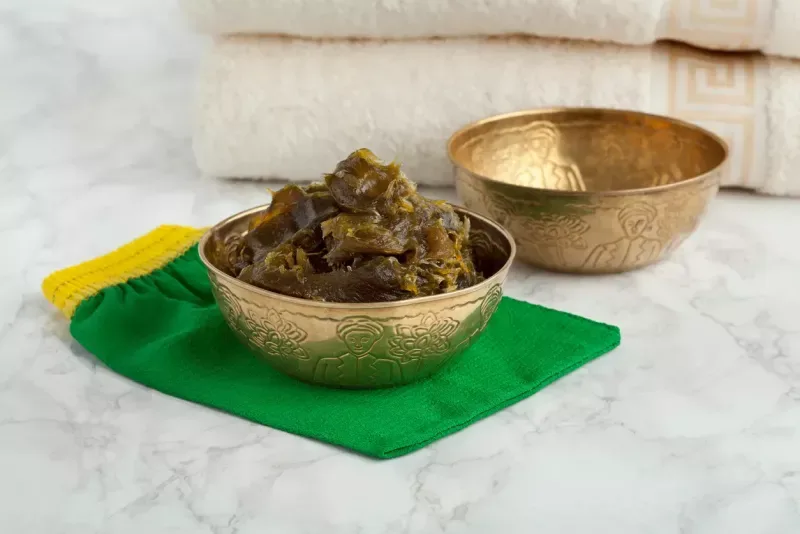
Women wear underwear only or go topless in traditional public hammams (women-only sections). In upscale tourist hammams, you'll receive disposable underwear to wear throughout. Bring flip-flops and a towel.
Customize Your Dream Vacation!
Get in touch with our local experts for an unforgettable journey.
Plan Your TripCultural and Social Significance of Hammams
The true essence of Moroccan hammams reveals itself not merely through their ancient stones and steaming chambers, but through the vibrant social tapestry they continue to weave across communities throughout the kingdom.
A weekly ritual for families and friends
Weekly hammam visits form an unbreakable thread in the social fabric of Moroccan life, maintained faithfully by families regardless of modern conveniences available in their homes. These regular gatherings serve multiple purposes. Physical cleansing intertwines seamlessly with meaningful social connection as friends and relatives share stories, concerns, and celebrations within the warm, humid chambers. The practice establishes a dependable rhythm that punctuates daily existence, creating sacred time for community bonds that extend far beyond simple hygiene routines.
Neighborhood hammams often witness the same families return week after week, sometimes across multiple generations. This loyalty creates intimate communities within communities, where attendants know each visitor's preferences, children grow up alongside their peers, and local news travels through whispered conversations echoing off tiled walls.
Gendered spaces and community bonding
The gender-separated nature of traditional hammams, whether through dedicated facilities or alternating schedules, creates particularly significant spaces for women's social interaction. Within these steam-filled sanctuaries, away from public scrutiny and social constraints, women discover rare freedom to speak candidly about personal matters, share remedies and advice, and forge friendships that often span decades.
Anthropologist Valerie Staats recognized these weekly hammam visits as potentially the only regular "me-time" available to many Moroccan women, highlighting how these ancient institutions continue to serve modern social needs. The windowless chambers become confidential meeting spaces where generations of women pass down wisdom, offer emotional support, and maintain cultural traditions through lived experience rather than formal instruction.
Hammams before weddings and celebrations
Hammams assume ceremonial importance during life's most significant moments, particularly surrounding wedding celebrations. The pre-wedding hammam ritual represents far more than beauty preparation; it serves as a rite of passage where the bride-to-be receives blessings, advice, and emotional support from her female community.
These special hammam gatherings transform into joyous celebrations filled with song, laughter, and traditional rituals. Female relatives and friends lovingly tend to the bride, washing her hair with precious ghassoul clay, massaging her skin with aromatic oils, and adding delicate rose petals to her final rinse. The ceremony creates lasting memories while symbolically cleansing the bride for her new life chapter, surrounded by the women who will continue to support her throughout her marriage.
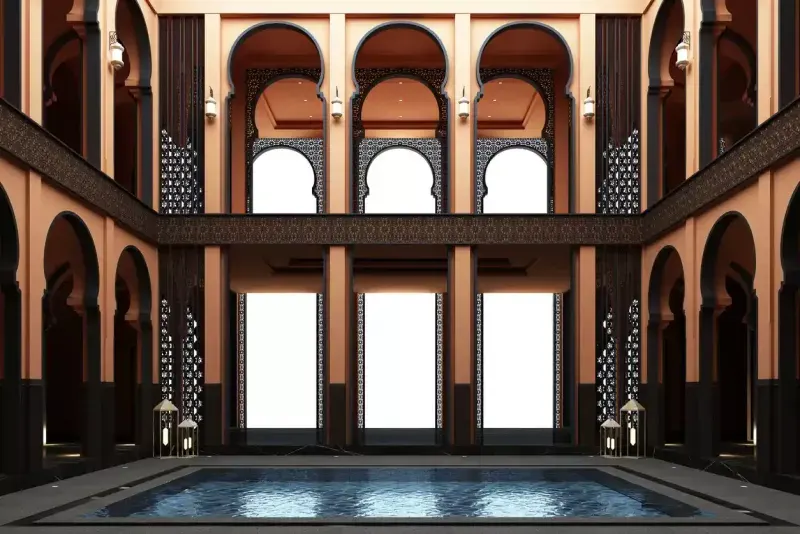
You'll receive the same traditional treatments (steam, black soap, scrubbing, rinsing) but in a private room with your own attendant. It's more comfortable for first-timers and couples, with personalized attention and no shared spaces.
Bringing the Moroccan Hammam Home
The sacred rituals of Morocco's ancient bathhouses need not remain confined to North African soil; careful preparation and authentic materials can transport this centuries-old wellness tradition directly into your personal sanctuary.
Essential tools: black soap, Kessa, Ghassoul, Argan oil
Authentic home hammam experiences depend upon four cornerstone elements, each carrying the weight of Moroccan tradition. Moroccan black soap (Beldi) forms the ritual's foundation. This distinctive paste-like cleanser, crafted from olive oil and macerated olives, delivers profound nourishment while preparing skin for the purification ahead. The Kessa glove represents centuries of bathing wisdom, its unique crepe fabric construction designed specifically to lift away dead skin cells and clear blocked pores with remarkable efficiency.
From the mineral-rich depths of the Atlas Mountains comes Ghassoul clay, a natural treasure abundant in magnesium, iron, and potassium that draws impurities from skin while infusing it with earth-born minerals. The ritual's culmination relies upon Argan oil, Morocco's liquid gold, dense with vitamin E and essential fatty acids that lock moisture deep within the skin while soothing tired muscles.
Step-by-step home hammam routine
Your domestic hammam begins with steam creation throughout your bathroom space, opening pores and loosening muscle tension. Apply black soap in thin, even layers across dampened skin, allowing this traditional preparation to work its softening magic for 5-10 minutes. The Kessa glove follows, worked in circular and upward patterns across the body, paying particular attention to areas where skin feels rough or neglected.
Thorough rinsing precedes the clay application. Mix Ghassoul powder with water until it reaches proper consistency, then spread this Atlas Mountain treasure across both body and hair, permitting its mineral-rich composition to work for fifteen minutes. Final rinsing clears away the clay, leaving skin prepared for the ritual's crowning moment: a thorough argan oil massage that seals moisture and completes your transformation.
Tips for creating a spa-like atmosphere
Ambient lighting sets the proper mood, softens harsh bathroom illumination, and introduces gentle instrumental melodies that echo the peaceful atmosphere of traditional hammams. Essential oil diffusion brings authentic Moroccan aromatics into your space, with eucalyptus or orange blossom creating the perfect olfactory backdrop. Traditional Moroccan mint tea prepared beforehand provides post-ritual refreshment that honors the cultural experience.
Clear your bathroom of everyday clutter and distractions, creating the serene environment that proper hammam rituals demand. Premium towels warmed to welcoming temperatures and a luxurious robe complete your preparation, ensuring that every detail supports the authentic hammam journey you're creating within your walls.
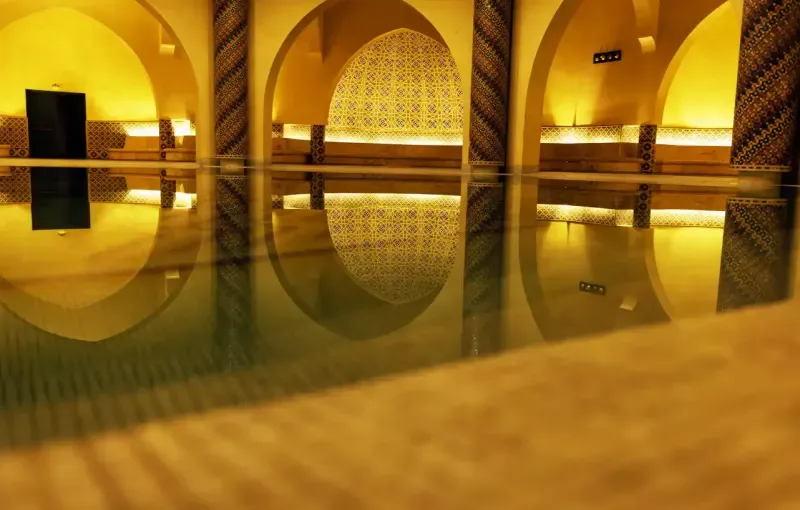
Avoid direct sun exposure for 24 hours (your skin is sensitive), skip heavy makeup, don't shave immediately (skin is too sensitive), avoid tight clothing, and skip intense exercise. Stay hydrated and let your skin breathe.
Hydrate well beforehand, avoid shaving 24 hours before (prevents irritation), eat a light meal (not on an empty/ full stomach), remove jewelry, arrive with clean feet, bring flip-flops and a towel, and mentally prepare for intimate scrubbing.
Conclusion
The enduring presence of Moroccan hammams across centuries reveals something profound about human nature's relationship with ritual, community, and wellness. Our exploration has traced the remarkable journey of these ancient bathhouses from their practical origins in medieval North Africa to their continued role as vital social institutions in contemporary Moroccan life.
The hammam tradition demonstrates how authentic wellness practices transcend mere physical benefits. Each element of the six-stage ritual, from the initial warming chamber to the final argan oil application, serves both individual restoration and collective cultural preservation. This dual purpose explains why neighborhood hammams continue to flourish throughout Morocco, even as modern conveniences become increasingly accessible.
What emerges most clearly from understanding hammam culture is the wisdom embedded within communal wellness practices. These bathhouses provide something that private bathing simply cannot replicate—the irreplaceable experience of shared ritual, intergenerational knowledge transfer, and community connection. The weekly hammam visit represents far more than hygiene; it embodies a commitment to maintaining cultural continuity while addressing fundamental human needs for belonging and renewal.
The six-stage hammam process—warming, steaming, applying savon beldi, exfoliating with the Kessa glove, treating with ghassoul clay, and moisturizing with argan oil—offers a template for mindful self-care that modern wellness seekers increasingly recognize as invaluable. This methodical approach to purification, developed over generations of practice, provides both physical benefits and the deeper satisfaction that comes from participating in meaningful tradition.
Morocco's hammams ultimately teach us that the most enduring wellness practices are those that successfully integrate individual care with community values. These remarkable institutions continue to thrive because they address something essential about human social nature, our need for spaces where tradition, health, and connection intersect in purposeful ways that honor both our well-being and our collective heritage.
FAQs
Q1. What is a Moroccan hammam, and how does it differ from other bathhouses?
A Moroccan hammam is a traditional steam bath that offers a unique cleansing and relaxation experience. Unlike other bathhouses, it typically consists of three or four rooms with different temperatures and doesn't include pools. The ritual involves specific steps using traditional products like black soap and a Kessa glove for exfoliation.
Q2. What are the main steps in a traditional Moroccan hammam ritual?
The traditional hammam ritual involves six main steps: warming up in a dry room, entering the steam room for skin preparation, applying Moroccan black soap, exfoliating with a Kessa glove, using a ghassoul clay mask for body and hair, and finishing with an argan oil massage and rinse.
Q3. What should I wear in a Moroccan hammam?
Etiquette varies, but generally, women may have the option to go nude in some hammams, while men are always expected to wear bathing suits. It's best to observe what others are doing or ask the staff about the specific rules of the hammam you're visiting.
Q4. What is the cultural significance of hammams in Morocco?
Hammams play a crucial role in Moroccan culture as weekly rituals for families and friends. They serve as important social spaces, especially for women, and are often part of special celebrations like weddings. These bathhouses foster community bonding and are deeply ingrained in Moroccan social life.
Q5. Can I recreate a Moroccan hammam experience at home?
Yes, you can create a home hammam experience with the right tools and atmosphere. Essential items include Moroccan black soap, a Kessa glove, ghassoul clay, and argan oil. Create a steamy environment in your bathroom, follow the step-by-step ritual, and enhance the ambiance with dim lighting, soft music, and aromatic oils to recreate an authentic hammam experience.
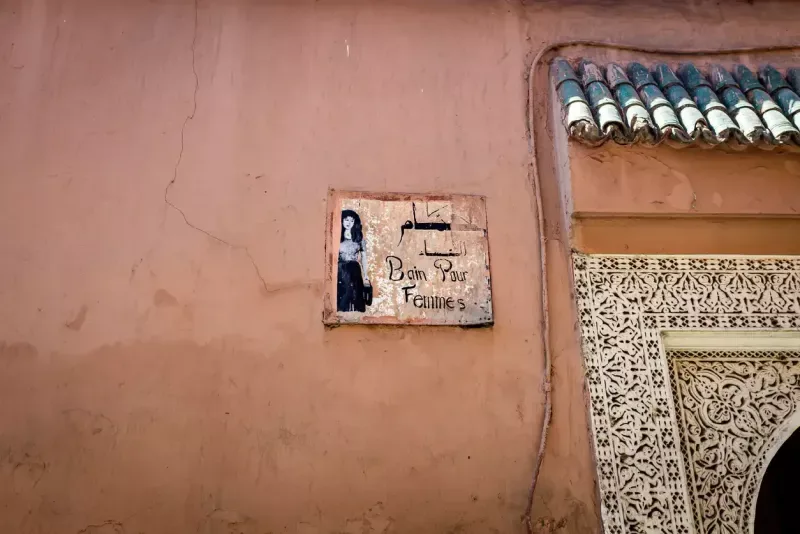
Keep your voice low (respect the relaxing atmosphere), follow attendant instructions, tip 10-20 MAD for public hammams or 50-100 MAD for private, respect gender-separated areas, bring your own toiletries to public hammams, and avoid staring at others.
